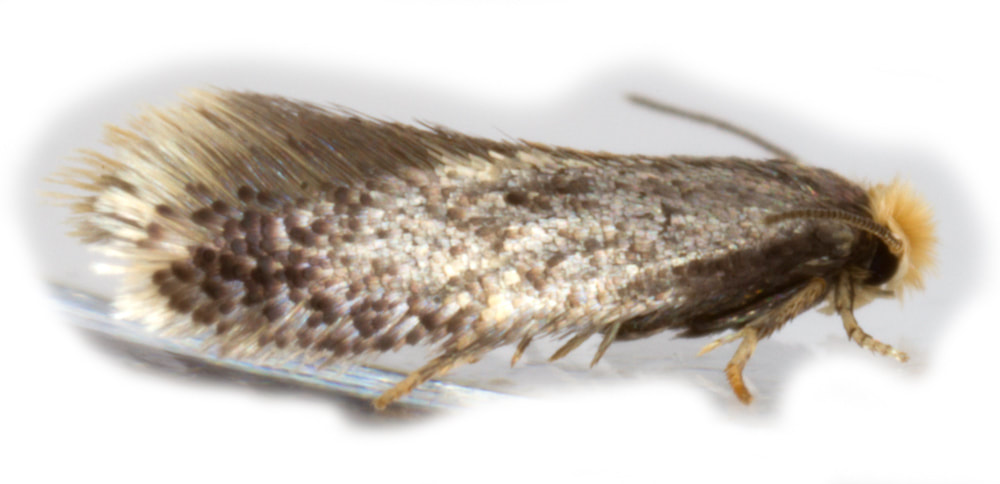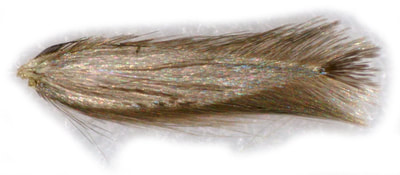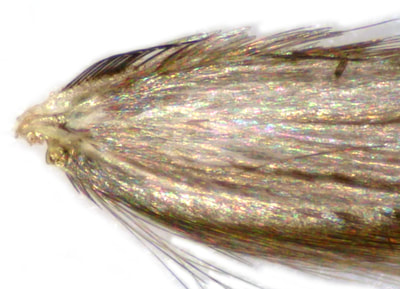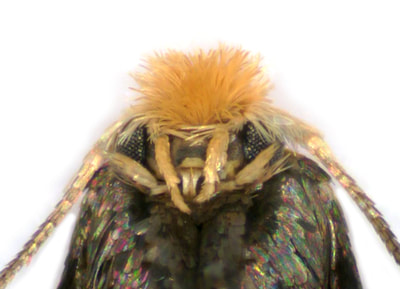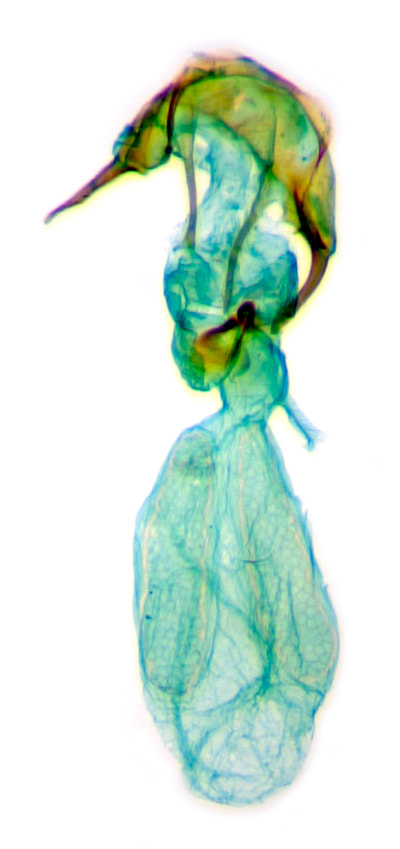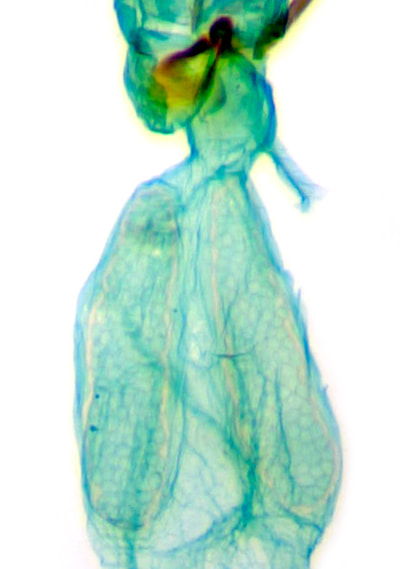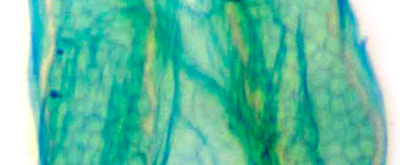04.085 Ectoedemia argyropeza (Aspen Dot)
ws: 6-7mm; May-Jun; Mine in leaf of aspen (Populus tremula) Jul-Nov; widespread throughout GB; parthenogenetic (females only)
ID: §1 lacks discrete white spots but does show a suggestion of mid-costal and dorsal white spots; frontal tuft pale ferruginous, collar concolorous; eyecaps white. With a forewing length of 3.2mm and female genitalia showing a typical Ectoedemia pattern - it is one of the larger Ectoedemia species; and relatively few of these fly mid-May. Unfortunately, at the time of writing, the previously very helpful nepticuloidea.info seems to have lost all its descriptions of Ectoedemia species, making it a much less useful site.
From the key in MBGBI1: Forewing with costal and dorsal pale spots; terminal cilia abruptly whitish after a line of dark-tipped scales; we then have to go with basal area not or hardly mixed with white (as the alternative that the basal area is much mixed with white > E.turbidella and this identification is not supported by the genitalia); costal spot in middle of costa and dull white or yellowish (rather than proximal or distal to this or silvery) > E.argyropeza
Other Ectoedemia species with a wingspan around 7mm and flying in May are:
E.louisella and E.sericopeza both have a fascia as well as costal, dorsal and basal spots and appear to have a less strongly sclerotised ostium.
E.occultella: - wall of signum ~ as broad as a typical reticulation vs wall obviously narrower in E.argyropeza (and E.hannoverella and E.turbidella);
L signum 5 reticulations broad, R signum 6 reticulations broad vs 6 & 7 repectively in E.argyropeza (and E.hannoverella and E.turbidella)
E.hannoverella and E.turbidella are more difficult to exclude. Correspondence with Erik van Nieukerken confirms the identity on the basis that the abdominal apex (apex of the ovipositor) is very broad (pointed in E.turbidella).
From the key in MBGBI1: Forewing with costal and dorsal pale spots; terminal cilia abruptly whitish after a line of dark-tipped scales; we then have to go with basal area not or hardly mixed with white (as the alternative that the basal area is much mixed with white > E.turbidella and this identification is not supported by the genitalia); costal spot in middle of costa and dull white or yellowish (rather than proximal or distal to this or silvery) > E.argyropeza
Other Ectoedemia species with a wingspan around 7mm and flying in May are:
E.louisella and E.sericopeza both have a fascia as well as costal, dorsal and basal spots and appear to have a less strongly sclerotised ostium.
E.occultella: - wall of signum ~ as broad as a typical reticulation vs wall obviously narrower in E.argyropeza (and E.hannoverella and E.turbidella);
L signum 5 reticulations broad, R signum 6 reticulations broad vs 6 & 7 repectively in E.argyropeza (and E.hannoverella and E.turbidella)
E.hannoverella and E.turbidella are more difficult to exclude. Correspondence with Erik van Nieukerken confirms the identity on the basis that the abdominal apex (apex of the ovipositor) is very broad (pointed in E.turbidella).
§1 Strumpshaw Fen, Norfolk; 16/05/2017; female; fw 3.2mm; to light
All images © Chris Lewis
All images © Chris Lewis
Page published 04/04/2018 (§1)
